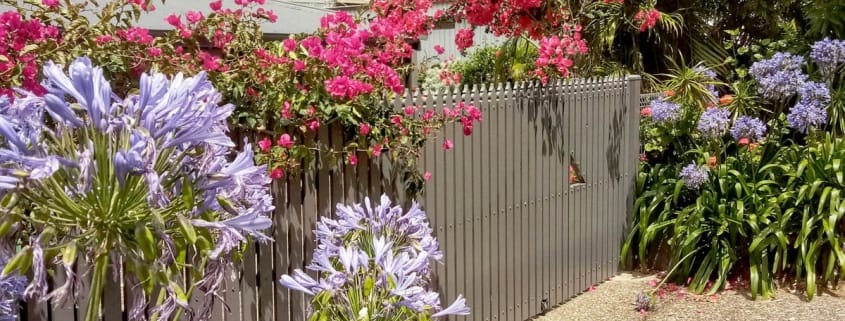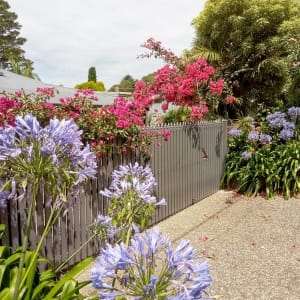Pondering Precipitation
The warmest month of the year seems like an opportune time to discuss the wettest thing in the garden. After the soaking we got in October, one would have thought that the world would never dry out, and then the relentless wind throughout November had us all reaching for the hoses as December arrived. The cracks in the ground expanded and our plants began to wilt, be they planted in pots or plots.
Like humans, plants need water if they are to survive and thrive. In the best-case scenario, an inch of rain a week would keep even the most tender, newly-sown seedling straight and strong. But when the downpours disappear, how can we get the most drips for our dollar?
Firstly, catch the rain when it comes. Town water costs coins, sky water is delivered for free. Our house roofs are very cleverly designed to channel all that free water to one convenient place and then dispose of it. Take advantage of this design, find space for a tank, tap into the downpipe system and start storing the formerly wasted water for a non-rainy day.
Secondly, efficient delivery. If you are lucky, you will have been able to locate your tank uphill of most of your garden and you can let gravity do the work for you. The uber-efficient amongst us will have installed a drip irrigation system around their gardens direct from their water tanks, using a dedicated low-pressure recycled water dripline (purple in colour). Consider installing an automatic tap timer to prevent accidental water losses. Even if you can’t run on rainwater, consider a drip system direct from your mains tap.
Thirdly, mulch, mulch, mulch! Having gone to all the above trouble to get the wet stuff to the green stuff, you are going to want to keep the wet stuff there for as long as you can. The sun and the wind will be working as hard as they can to evaporate all your hard work and mulch is going to slow them both down considerably. Not to mention the fact that mulch also suppresses weeds, protects the soil from the erosive impacts of wind and rain and feeds the soil with organic matter as it breaks down. Mulch can be anything from hay/straw, seaweed, mushroom compost, sugar cane waste, grass clippings, shredded paper or bark chips. Mulch can even be stones, although they will be much slower to break down!
Meanwhile, around the towns we have seen some pretty special agapanthus displays. Love ‘em or hate ‘em, a mixed border or fringing clump of blue and white waving wands is a stunning sight at this time of year, and so hardy. If you are prepared to dead head the spent flowers to stop seed spread, I see no problem with this tough old boot. Another stunner at this time of the year is bougainvillea and there are some incredibly showy specimens around. A controversial plant we know, but again with good management this dry-tolerant scrambling thorny devil can be tamed into a glorious cascade of pure summer colour. Prune it back after flowering and chop back any aggressive rogue shoots as they appear. A final shout out to all the hibiscus currently flowering. These three plants alone brighten up any late summer garden.
Things are pretty quiet in the wild places on the sides of the road, but the most recent singular stand out has been the flowering of Acacia irrorata (Green Wattle). Keep an eye out for splashes of pale yellow to cream coloured flowers up to ten metres high as you drive around the bush-flanked roads of the Triangle. If you stop for a closer look, you will see that it has feathery bipinnate leaves and that the flowers are shaped like small round balls.
Finally, in the vegie garden, ironically the warmest month is also the time to start planning for the coldest months, so get sowing seeds of broccoli, Brussels sprouts, celery, cauliflower, cabbage and leeks. Round out the soup season garden with some root vegetables such as beetroot, carrots and turnips, and keep the leafy greens coming with lettuce, rocket, silver beet and kale. Consider a green manure crop in previously harvested areas.
Happy growing!



